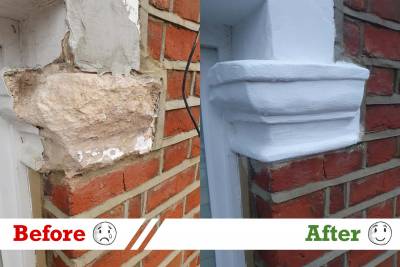In a period marked by eco-friendliness takes center stage in the construction industry, the practice of stone restoration stands out as a vital practice which combines the past with environmental awareness. Amid issues concerning global warming and diminishing natural resources, keeping existing buildings intact, such as stone buildings, serves as a sustainable option compared to new construction. While stone restoration breathe new life into aging materials, it also respects traditional artistry while reducing the ecological footprint involved in extracting and producing new stone.
In this ultimate guide to stone restoration, we will examine key aspects of the maintenance and revival of stone surfaces, discuss errors to steer clear of, and outline top techniques for maintaining old houses. Additionally, we will examine the role of stone restoration in the overall picture of sustainable design, shedding light on its role in promoting sustainability and robustness in the structures we inhabit. Whether you are a property owner interested in restoring stone, or a passionate learner wanting to understand the practice, this guide intends to deliver key insights on the significance of the practice of restoring stone in our quest for sustainable living.
Frequent Mistakes in Rock Restoration
One frequent error in stone restoration is underestimating the importance of appropriate cleaning techniques. Many individuals use aggressive substances or scratching tools that can hurt the stone exterior instead of protecting its integrity. It is important to use pH-neutral cleaners and non-abrasive brushes to preserve the stone's original appeal while efficiently removing dirt and grime. Ignoring this process can lead to color change and wear, ultimately requiring more extensive renewal work.
Another typical misstep is neglecting to assess the degree of harm before starting the restoration process. Rock may seem on the surface faulty, but there can be hidden foundational issues that need addressing. Omitting a detailed check can lead to overlooked issues, causing inadequate fixes. A qualified evaluation ensures that restorers can develop a complete strategy that tackles both visible and hidden deterioration, thereby prolonging the durability of the stone.
Lastly, many people neglect to consider the suitability of restoration products with the native rock materials. Using contemporary coatings or patches that are not suitable can lead to subsequent issues, such as discoloration or moisture build-up. It is important to research and choose materials particularly designed for the kind of stone being restored. This focus to detail helps maintain the rock's genuineness and functionality, ensuring a fruitful renewal that honors the true substance and workmanship.
Crucial Tips for Maintaining Rock Materials
Caring for natural stone surfaces demands a careful strategy to secure their lifespan and aesthetic appeal. Regular cleaning is important; using a pH-balanced cleaner will help remove dirt and blemishes without damaging the stone. Avoid harsh chemicals like bleach or ammonia, as they can weaken the material's integrity over the long term. Instead, use gentle soaps and soft cloths for daily maintenance. Implement a scheduled cleaning schedule to prevent buildup, and regularly rinse thoroughly to remove any cleaning residue.
In addition to daily cleaning, sealing your natural stone can provide an extra layer of safeguarding. Depending on the kind of material, sealing at least once a year to three years can help prevent stains and moisture absorption. When selecting a sealer, focus on a premium, stone-friendly product that matches the particular type of stone you have. Properly applied sealers improve the stone's aesthetic quality while acting as a shield against leaks and dirt.
Finally, consider the surrounding elements affecting your rock surfaces. If your material is outdoors, ensure it is sheltered from extreme weather conditions, as extreme conditions can lead to wear. For indoor surfaces, keep steady humidity levels to stop cracking or shifting. By being aware of these external influences and actively controlling them, you can significantly prolong the lifespan and condition of your stone surfaces.
A Sustainable Nature of Residential Restoration
Residential renovation acts a key role in promoting eco-friendliness by utilizing pre-existing structures instead of adding to urban sprawl through fresh construction. Renovating rock surfaces and buildings allows us to maintain the cultural essence and integrity of our surroundings, reducing the necessity for new materials. This method not only conserves resources but also minimizes waste, as restoration often involves tidying up, repairing, and upkeeping what is already present rather than tearing down and discarding complete structures.
Moreover, stone is a resilient material that has proven to be durable, often outlasting other building materials when adequately maintained. By putting Look at this website in stone restoration, homeowners are opting for an eco-friendly alternative that highlights the longevity of existing resources. This practice supports the circular economy by extending the life cycle of materials and lessening the energy and emissions typically linked to the production of new stones or synthetic alternatives.
Additionally, the act of restoring heritage homes and buildings is a proof to our commitment to preserving cultural heritage. It encourages community pride and improves the visual value of neighborhoods. As more homeowners realize the benefits of renovation over building anew, the movement towards eco-friendly architecture continues to gain traction, contributing to a greener, more responsible future.

